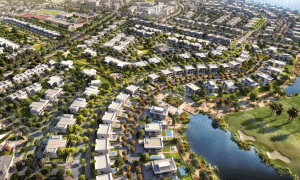Deep basement design considerations
Multiple design considerations have to be taken into account when projects are to have useable underground areas, says Cundall’s Fazel Bashir

Deep basements are becoming quite common in central business districts, downtown areas and prime high-rise developments, where land area is limited and costly. It is also common in cities which have a shortage of parking spaces because of poor city planning, and therefore impose strict parking requirements on new developments.
Design and construction considerations are an important aspect for engineers to be aware of early on, to advise clients such as developers, architects, project managers and contractors. These considerations are widely applicable to projects in the Middle East, and most are even applicable to projects globally.
With the many masterplan projects launching or restarting, site investigations and geological studies are very important considerations for developers, consultants and contractors. Several factors lead to fluctuation in the ground water table, such as dewatering in the surrounding areas, development of the masterplan and seasonal temperature variations.
Hence, consideration of the appropriate maximum water table height becomes a key parameter for the design of the basement. Lack of consideration for this parameter means developers and owners could face water cracking, leakage and durability issues with the basements, a serious risk which can be underestimated.
Design Considerations
There are several factors to consider:
– Ground Water Pressure. The water table is usually encountered 1.5-3m from the ground surface in developed urban areas close to the sea. As the depth of the basement increases, the uplift water pressure also increases linearly. The increase in water pressure has global uplift and local high-pressure effects. Providing additional structural mass, tension piles, retaining walls and ground anchors are some of the solutions. Globally, another option is providing a drainage system which becomes active when it triggers water. This option is costly and not common in the Middle East.
– Concrete Durability. The ground water in the region is highly saline and quite often contains considerable concentrations of chlorides and sulphates. This means the concrete can be attacked by sulphates, and reinforcement corrosion can take place because of the presence of the chlorides. Some solutions are concrete mix, concrete cover, limiting crack widths, a waterproofing membrane and cathodic protection.
– Permanent Retaining Wall Design. The permanent retaining wall needs to be designed for lateral soil pressure, hydrostatic water pressure, surcharge pressure and lateral seismic earth pressures. Furthermore, the crack width in the retaining wall needs to be limited, as per code requirements and local standards.
– Basement Slab Diaphragm Action. The basement slab acts as a restraint for the perimeter retaining wall and a medium to transfer the lateral earth pressure to the lateral stability elements such as the core walls. Some of the considerations for engineers are the presence of large openings at or near the retaining wall or the lateral stability elements, and slab offsets between the retaining wall and the lateral stability elements.
– Foundation Design. The foundation solution selected for deep basements is most often one of the following: raft foundation, piled foundation and pile-assisted raft foundation. This is most effective for the design of tall buildings and requires complex and detailed analysis in close coordination, as well as input from geotechnical engineers. The drivers for selection of the appropriate foundation solutions include building height, basement depth, ground water table, allowable bearing pressure, boundary conditions, and time and cost of the foundation solution.
Temporary Works Considerations
Temporary or enabling works are the scope of works assigned to a specialist contractor. The scope of works allocated to the specialist contractor include site set-up/hoarding, site survey, verification of the geotechnical investigation, dewatering, temporary shoring wall, excavation and temporary bracing.
Site dewatering is one of the initial considerations for the enabling works contractor, following site set-up and site survey, before subsurface excavation for shoring and foundations. It involves the use of submersible dewatering pumps, centrifugal pumps or application of vacuum to well points. Dewatering of deep basements is a running cost and in practical conditions usually lasts until the middle or end of completion of structural works. To reduce the running cost of dewatering during construction, some engineers consider other foundation solutions such as a piled foundation, and turn off the dewatering system following completion of the basement construction.
During the construction practice, the shoring walls are temporary and relied upon during the construction process only. There will be a second concrete wall (referred to as a retaining wall) which is treated as permanent and designed for lateral ground pressures. In North American and European construction practice, it is normal to consider the shoring wall a permanent wall as well, and save on additional material, time and cost.
An allowance should be made for the thickness of the shoring wall, construction tolerance and the internal permanent retaining wall at the early concept stage of the project. This is important, since the thickness and construction tolerance for the retaining wall are not permitted to encroach outside the project site footprint, and it will affect the design if it is neglected. The overall thickness of the shoring wall depends on the depth of the basement, the magnitude of earth pressures, site constraints and the degree of internal or external bracing to the shoring wall.
Site excavation is usually a time-consuming process of the enabling works package, depending on area, depth and accessibility to the basement. Excavation works need to be coordinated with the construction methodology of the basement. This includes but is not limited to diaphragm wall construction, raft/pile construction, waterproofing installation and storage of materials.
Depending on ground conditions and diaphragm wall design, either a single line or multiple lines of ground anchors will be required. Ground anchors will need to extend beyond the building footprint, hence the consequences of temporary works extending outside the site boundary will need to be considered.
To adopt ground anchoring system, the ground anchors have to be clear of services and utilities on the access road and waterway side. In addition, approvals from local authorities and no objection certificates have to be procured. Similarly, if there are adjacent empty plots owned by private developers, approvals from the plot owners have to be sought to temporarily ground anchor.
Internal Bracing
In case it is not possible to use ground anchors on either or all sides of the plot, internal bracing can be considered an alternative. The layout and location of internal bracing depends on the geometry of the basement footprint, construction logistics and site constraints. Using steel members instead of concrete as material for the internal bracing is suggested, due to the high demobilisation costs.
Pile design is usually a specialist design item by the piling contractor. The designers have the obligation during the design process to make assumptions on pile layout, diameter and length in order to inform the design of the foundations. Structural engineers can liaise with geotechnical engineers and piling contractors during the design stage, to size the piles. Considerations for pile design include ground conditions (soil friction/end bearing capacity), pile capacity (tension/compression), crack width criteria and pile shear capacity (particularly at the pile head, where it can be subjected to high shear forces due to the raft thermal/shrinkage movements).
Instrumentation of the enabling works and monitoring of the ground water table and movement of the shoring wall should be considered, to make sure they are within the allowable limits. It is important to note that basement design solutions will not always be traditional, and can be affected by the specific project site conditions and its interface with the boundary conditions.
Fazel Bashir is an associate director at Cundall





